Michigan senior's homes, livelihoods imperiled by intensifying floods
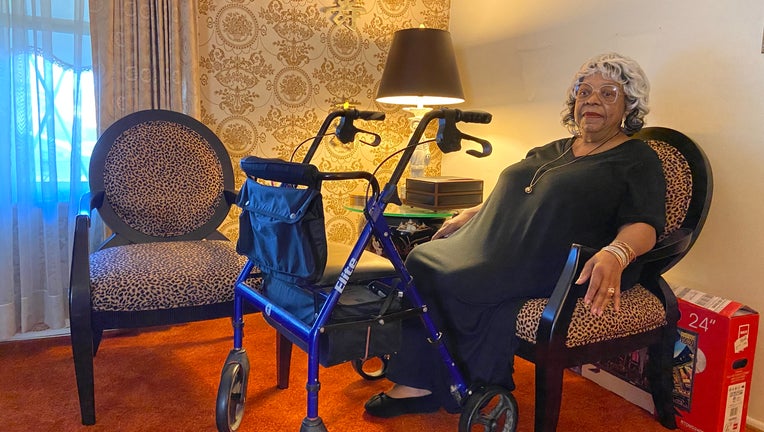
January Castleman in her Inkster home. She's been through three floods at the residence. Photo via Jack Nissen
INKSTER, Mich. (FOX 2) - January Castleman doesn’t need words to describe her home’s past three floods. Instead, she just laughs.
The mess it creates in her basement. The runaround she gets from her insurance company. The patchwork of solutions that awaits her when she tries fixing the damage.
The experiences in her Inkster home have left the 77-year-old angry and frustrated. But also a feeling of helplessness that’s morphed into a kind of morbid amusement at her predicament.
"I’m not disgruntled with the system - I’m mad as hell at it. And now I’m too old to do anything about it," she says, chuckling again.
Jasmine Porter has a harder time joking about her own mother’s situation. Rosetta Walker’s home in Oak Park, already showing evidence of heavy water damage on the first floor, has mold growing in the basement from the 2021 flood. It makes her daughter dizzy when she walks downstairs.
First came the flooding last June, Porter says. Then came the smell. "When I tell you it reeked, I’ve never smelled something so bad," she said. "It was in her (mom’s) clothes. And then she started to show signs of forgetfulness."
Porter suspects the mold is behind her mom’s memory loss.
But Walker, 69, doesn’t want to leave her home. It’s been hers for more than two decades and the memories it holds are special to her. She even picked bankruptcy proceedings that will allow her to keep her home.
The historic flooding last year wasn’t the first that either Castleman or Walker experienced. But faced with another summer of potential flooding, it could strain their livelihoods even more than they already are. Both live on tight budgets. Both have physical mobility issues. One is going through bankruptcy and the other doesn’t have any family to help her.
And both fear what another season of strong rains could have on their homes.
Elderly populations are some of the country’s most vulnerable - hampered by physical and health limitations, many survive on fixed incomes with no buffer in case of an emergency. Yet when their homes flood, seniors face thousands of dollars in repairs or face living in a toxic environment if they can’t afford them.
RELATED: 'One of the worst storms we've had'; weekend rain leaves Detroit freeways flooded Monday morning
As both Walker and Castleman discovered in the wake of their floods, finding a low-cost solution might still be too expensive. Or, if they’re filing a claim with the government for assistance, too complicated a process to navigate.
"It’s messed up man," said Josh Elling, CEO of Jefferson East, which advocates for the neighborhood’s residents. "Some folks are so accustomed to challenging home repair issues...there’s such a lack of knowledge of how to navigate the disaster relief system."
And home repairs from the previous storm can’t promise they won’t be washed away in the next flood - which, despite all the uncertainty about preparing for a disaster, feels like the only guarantee.
"The population is aging and the folks remaining that have stuck it out, they don’t have the ability or desire to leave," Elling said. "What is it now? A 500-year-flood every seven years? The increasing likelihood of more precipitation and our infrastructure can’t handle it."
"It’s very disheartening on many levels."
First came the water, then the mold
Porter wasn’t the only family member that used to help Walker. Only three years ago, the family’s grandmother, Lulu, stayed with Walker, her daughter. The two were tied at the hip and together could manage the upkeep of a home.
And then Lulu died in 2019 following a series of health issues that began after another historic flood event in 2014. Part of Porter’s concern over her mom’s evolving forgetfulness is the parallels the story has to her grandmother’s.
"When the flood hit, our grandma’s health problems increased. Breathing issues, dementia, Parkinson’s, things we had never had," Porter said, "it comes from the mold."
After the 2014 flood, the family had the basement walls removed to clear out the mold. But another flood in 2017 pushed them back to square one. They tried to fix the problem themselves, but "even after we cleaned it, we could smell it faintly. But what could we do?"
Where floods come, mold will surely follow. And left unresolved, short-term issues of wheezing, red eyes, and itchy skin can turn into long-term respiratory issues. It’s associated with asthma in children. Some theorize it’s also behind memory loss and lethargy, although the CDC says that link has yet to be proven.
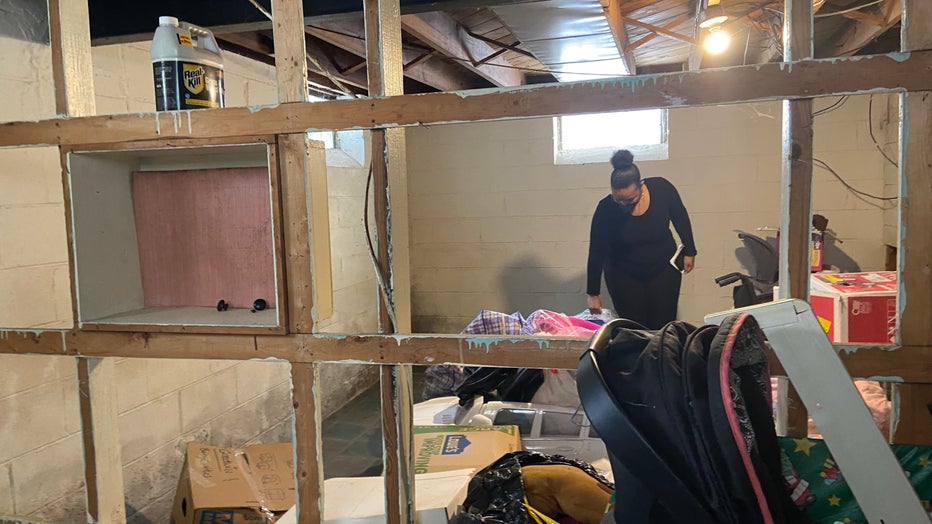
Jasmine Porter in her mom's home. She worries the mold will further exacerbate mom's health problems. Photo via Jack Nissen
Mold problems can be avoided if a water-damaged home is cleaned within 24 hours after a flood event. But the longer water damage remains, the more mold can spread, driving up the costs of restoration. It can damage the structural integrity of a home, further burdening the homeowner with costs.
Removing mold from a basement can cost, at minimum, hundreds of dollars, and quickly climb into thousands - an expense that millions of Americans say they could not afford. According to a survey conducted by the Federal Reserve in 2020, 37% of adults would struggle to cover a $400 emergency expense.
The repairs don’t stop with mold after a flood. Carpet needs to be ripped up. Belongings need to be thrown out. Appliances need to be replaced. The damages can be expensive to fix. If they’re not, they can become hazardous to one’s health.
"If 40% of American’s couldn’t deal with an unexpected cost of $400, but home repairs cost thousands and tens of thousands (of dollars), how is this population supposed to deal with that?" asked Dr. Roshanak Mehdipanah, an assistant professor in the University of Michigan’s School of Public Health.
Here is where tough questions about public health and housing intersect in real life, Mehdipanah says. And yet, she argues, cities rarely account for the needs of quality public health when building or improving homes.
"Until public health gets more of a role in development and city functions, we’ll continue seeing issues like this rise," she said.

The issues aren’t exclusive to owners. Renters can struggle getting their landlords to make improvements that might help protect against a flood, but aren’t required to be installed. The city of Detroit has struggled in recent years to force landlords to get their properties up to basic compliance level.
It’s a situation that society has "no choice" but to address, Mehdipanah says. Based on population trends, the number of the country’s most vulnerable population will continue to grow.
The number of people 65 years and older in the U.S. is expected to grow from 48 million to 79 million by 2035, according to a report from the Joint Center for Housing Studies at Harvard University. The rates of seniors who live alone is also expected to rise; so will the number of those with a mobility disability.
Meanwhile, the share of older adults able to maintain their pre-retirement lifestyle will fall, while the number of older adults living in poverty is expected to climb from 15 million to 27 million. Many more will be renting or shouldering increasing mortgages.
"We’re in the midst of the baby boomers growing and it’s only going to get worse," Mehdipanah said. "They’re a population that was heavily impacted by the recession, so depending on where the individuals live, they’re stuck in place and can’t really leave."
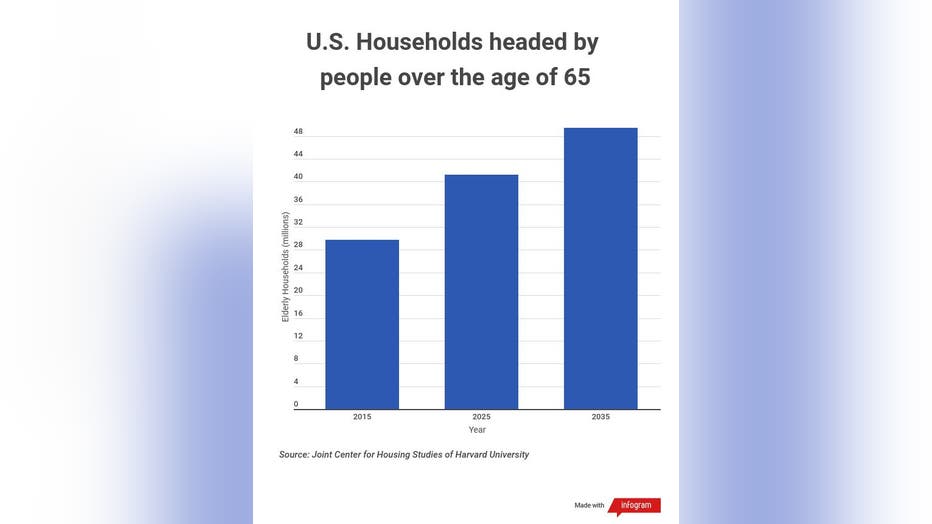
A maze for flood relief
When January Castleman’s home flooded the first time, she said her insurance company would pay for $5,000 of the estimated $26,000 in damages. She instead got help from her church.
The next time her home flooded, she got help from a large family and paid people to haul damaged possessions and garbage away.
But by the third flood, she considered it might be time to sell her home. She had reached out to FEMA for help, but was denied and wasn’t given a reason why. She was then told she could reapply and the agency may reconsider her claim. Then, a faith-based group named Samaritan’s Purse showed up at her door ready to help. Castleman isn’t sure where they came from and is even more confused by how they found out about her predicament.
Over two days, they arrived early in the morning, prayed, cleaned, broke for lunch, prayed more, then continued cleaning. At the end of the restoration, they gave her a Bible, which was signed by the volunteers.
"I felt like I was back in high school with a yearbook," she said.
Castleman may have been one of the lucky ones.
Flood assistance doesn’t usually come in the form of a happenstance charity. Instead, it requires filing claims, reapplying for claims, accurately documenting damage, knowing the relevant support groups to reach out to, and doing it quickly before the damage worsens.
It can be a rigorous process for anyone, Elling of Jefferson East said. But for seniors? It’s a "huge challenge."
"In our history, working with residents in an area after major flooding, folks need help navigating different relief resources. And the challenge has only gotten more severe since submitting damage claim forms is now online," he said.
Seniors can struggle navigating the internet assuming they have reliable access - which isn’t a given in Southeast Michigan. The answers they give on questionnaires might disqualify them for assistance since people accustomed to living in poverty might see their circumstances differently after a flood, compared to those that don’t.
That was a problem when FEMA officials asked people if their home was still livable, Elling said. "Some people said despite flooding and damage, because there were still four walls and a roof, residents would say ‘oh yeah, it’s liveable.’ Then they would get denied."
"But if you ask that question in Grosse Pointe Park, the answer is very different."
Elling says person-to-person case management is what’s necessary to help those groups through the process. Not just in securing funding, but connecting them with reputable contractors, applying for home repair grants, and keeping up with needed repairs before bigger expenses show themselves.
Phyllis Edwards, who runs the Southwest Detroit group Bridging Communities, says more coordination between residents and communities, and cities and emergency relief agencies is needed. Both for purposes of securing disaster assistance as Elling mentioned, as well as providing immediate help to those whose homes recently flooded.
"If you had a really well-oiled procedure, the fire department would be involved. So would the police, community developers, and residents. People would know where to go if the lights were out," she said.
"There’s a litany of things that need to happen to see communities well-resourced before a disaster happens - and not after."
Seniors make up about 60% of Jefferson East’s clients. But getting an idea of the scope of the problem in Southeast Michigan can be tricky. The U.S. doesn’t track the number of seniors living in flood damaged homes. Neither does GLWA, the agency that manages the region’s water system and was partly blamed for the flooding last year.
A spokesperson for the city of Detroit’s water department says the only data on seniors and household flooding they have comes from those who self-report. FEMA says among adults age 62 and older, they received more than 16,000 claims for disaster assistance after the June 2021 flood. Approximately 4,700 were denied.
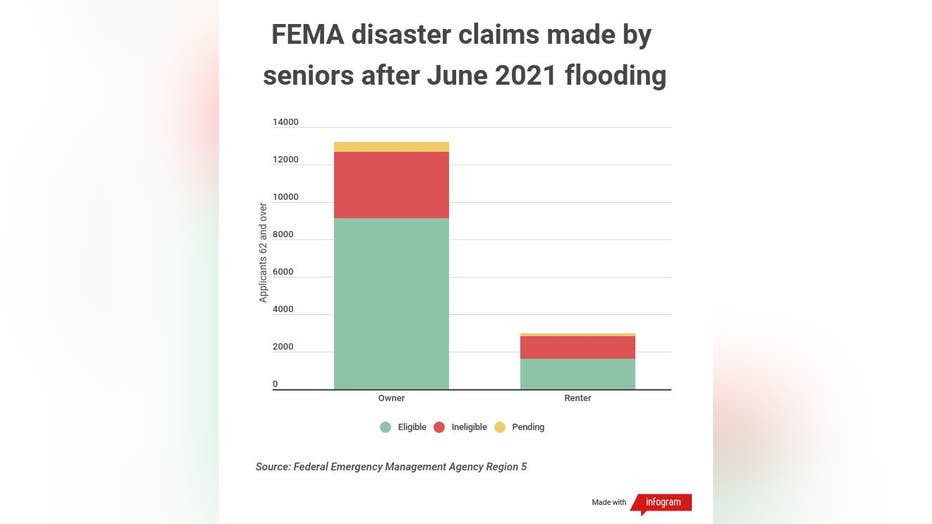
Yet, flooding has been an issue for close to half of Detroit households. Data collected through a survey overseen by Wayne State University and the University of Michigan determined 43% of all Detroit households experienced flooding from 2012-2020.
State lawmakers are trying to make getting disaster assistance easier. A package of bills introduced by House Democrats in Lansing would create a disaster relief navigator program and a weatherization program. Another bill would increase the number of block grants available to low-income households. One bill would bolster the state’s emergency alert system.
Detroit has also introduced its own program. The basement protection program aims to help protect homes in the city’s most flood-prone areas from further water damage. Thousands have already applied for the opportunity, which is being rolled out in phases this year.
Based on the questions asked during a flood town hall held in Jefferson East in April, it’s a heavily desired program. Those that attended the event had tense exchanges with leaders of DWSD and GLWA, underscoring the nervousness of many Detroit residents.
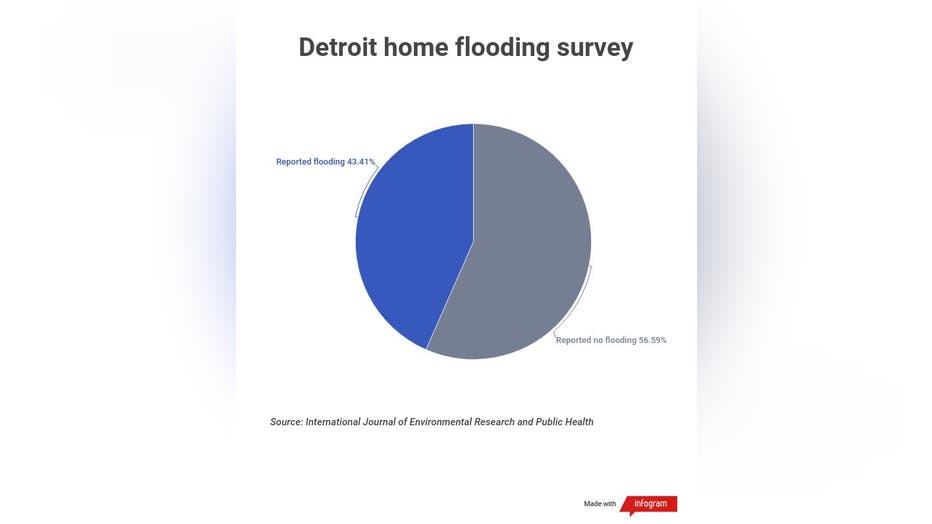
One resident shouted that she couldn’t see things getting any better. Another was upset the program didn’t include her home over others sooner. A third person said she’s still recovering from her 2021 floods.
"We’re traumatized," Lejuan Council said.
The program is being funded with $15 million in federal money and residents won’t need to fund the repairs. It’s one of the few options that’s feasible for low-income households most in need of support since many of the other low-cost programs still take the shape of an expensive loan.
"Those who can get them, that’s great," said UM’s Mehdipanah. "But even then, I’m not sure how many are getting the help."

